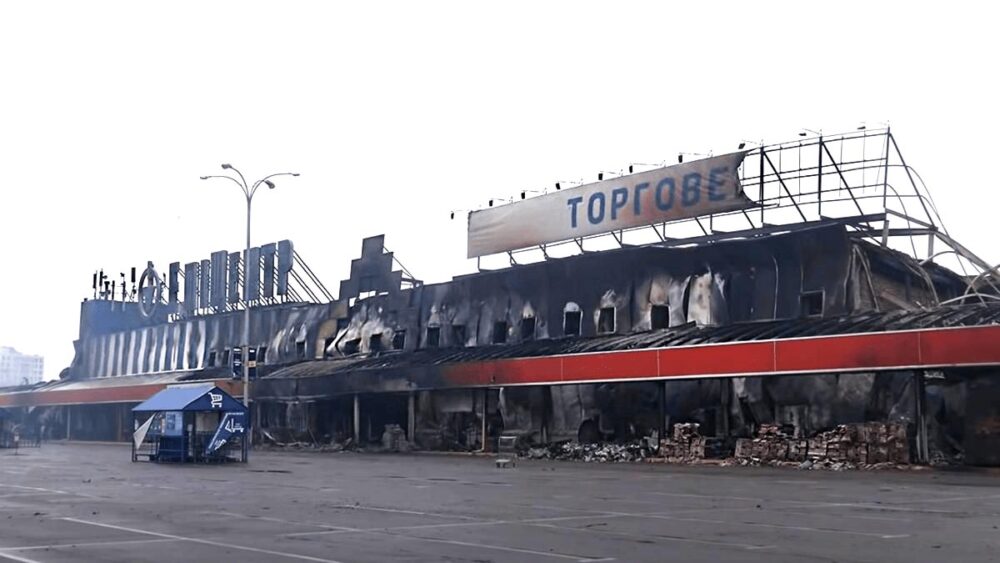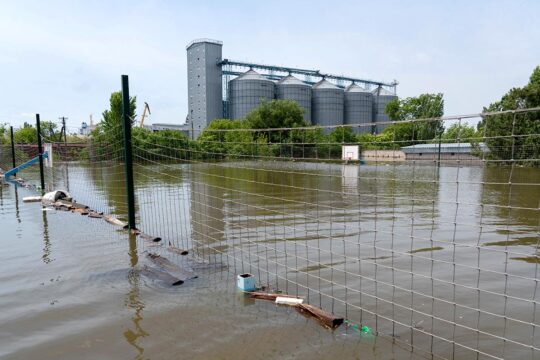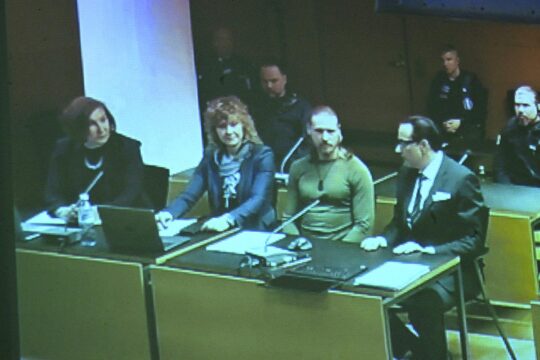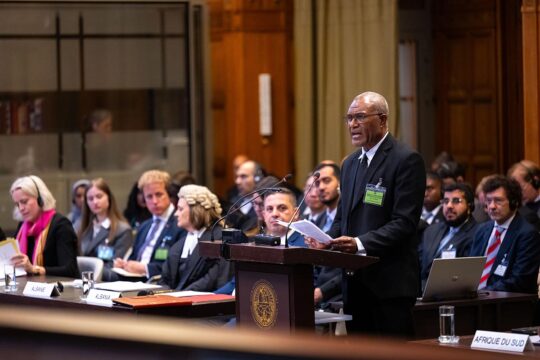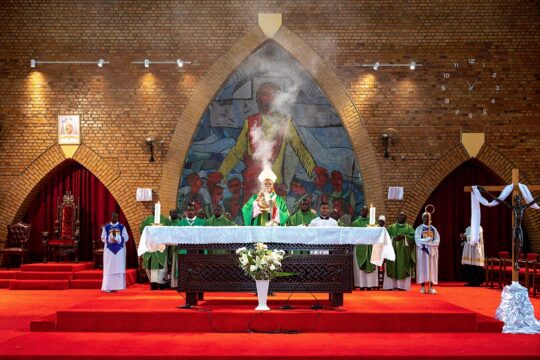On February 28, 2022, Russian shelling set the Epicentre hypermarket in the outskirts of Chernihiv, Northern Ukraine, on fire. A column of black smoke was visible from different parts of the city, and more than 22,000 square meters burnt down. A month after the end of the siege of Chernihiv, in May 2022, the site was examined by experts from the State Environmental Inspectorate to evaluate the ecological damage. According to their estimates, 17 chemicals hazardous to humans were released into the atmosphere.
The total amount of damage for the Epicentre shelling is estimated at over UAH 8 million hryvnias (about 200,000 dollars), but all together the damage caused by Russian shelling to the environment in the Chernihiv region currently reaches almost UAH 26 billion ($630 million), said Serhii Zhuk, the head of the State Environmental Inspectorate.
The Ukrainian ministry of environmental protection started developing methods to calculate the cost of damages after the full-scale invasion began. “There was no such war before, thus no experience of the kind. We have average pollution calculation coefficients. But the bigger the facility, the bigger the contamination area,” said Zhuk.
The ecological damage from the war is divided into that done to air, soil and water. “There are also coefficients for the surface and time of burning. It can burn for 24 hours or more, like Epicentre,” explained Zhuk. “A different methodology is used if there is fuel at the facility. We would not use the area’s surface, but the specific substance’s tonnage. When a ton is burned, a certain amount of chemicals is released. We would multiply all these numbers and reach an amount of money.”
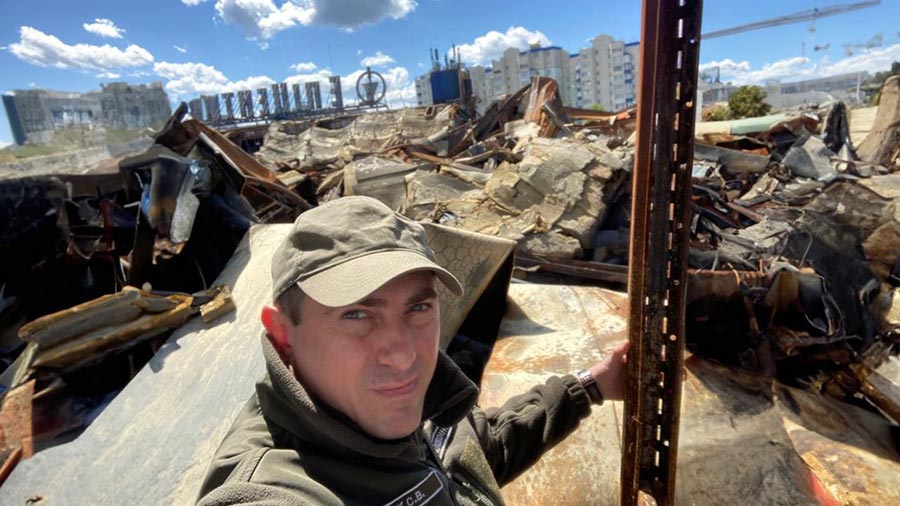
17 hazardous substances released
For the Epicentre fire in Chernihiv, the damages were calculated for excessive emissions of pollutants into the air. According to Ihor Mikhailov, head of the Department of state environmental supervision, waste and hazardous chemicals management, they were unable to access Epicentre immediately after the shelling, and the company’s management was not present in Chernihiv at the time.
“It required a lot of effort to get in touch with the company’s management in Kyiv. It was only in May 2022 that we started our work on the facility. In this case, the methodology was to calculate the damages in three categories of combustion: oil products, woods, buildings and premises. We determined the specific emissions of pollutants into the air."
The 17 hazardous substances released into the atmosphere were determined according to a standard methodology previously developed by European experts. “A consistent list of chemical elements is already established. We know what kind of substances and quantities are emitted into the atmosphere when a certain surface, oil products or wood is burnt. Only the burning time varies, and it affects the coefficients we use to calculate. The type of event also varies. It can be an ordinary household fire, which has one coefficient, or a fire during an armed aggression, which has another. The environmental pollution coefficient is the highest in the second case.”
According to Mikhailov, the calculation of damages from the Epicentre fire in Chernihiv is the first of its kind in Ukraine. “We timely studied these methods, mastered them and now use them. All the data and calculations we made were promptly submitted to the Chernihiv Regional Prosecutor’s Office so that they could process them and attach them to criminal cases against Russia."
Nausea, headaches, loss of consciousness, risk of cancer
The Epicentre fire has affected the health ofChernihiv residents in several ways. “The gases released during the fire exceeded the maximum tolerable level and had an impact on people’s psycho-emotional state. It results in chronic fatigue, impairs efficiency, causes nausea, headaches and loss of consciousness. Furthermore, it has a carcinogenic effect and a toxic impact on the respiratory system,” said Yurii Karpenko, an ecologist from Chernihiv.
“The residents of Bobrovytsia breathed that smoke, the entire Chernihiv did. We also drank contaminated water. In any case, our health has deteriorated. It is difficult to measure this because you can only quantify the measurements at the starting point, and there was no way to do so at the beginning of the full-scale war,” Zhuk explained. For him, if the Russian Federation compensates them, the funds could be used to improve the environmental situation in Chernihiv region. “We have an ecological fund. It is about 15 million hryvnias ($360,000) a year. So, if we could get at least a tenth of the total amount of ecological damages, which is more than UAH 25 billion, it would still be several times more than the ecological fund of the entire region,” he says. “We could use these funds to build a solar or wind power plant. We could distribute these funds to the communities so that they could upgrade water utilities, heating systems and purchase other modern equipment used in Europe and America.”
Studies and calculations’ process
All studies and calculations regarding ecological damage during the war are carried out on-site in Chernihiv, Zhuk said. “Our laboratory is fully certified for all the substances. There are several ways to work when we need to examine a site after it has been hit by a shell or a missile. One of them is to involve the environmental inspection as part of criminal proceedings. When a criminal case is initiated, the environmental inspection is assigned to evaluate, among other things, ecological damage.”
However, the practical application of this method is hardly ever used because it takes a lot of time, the head of the regional environmental inspection said. “As part of the criminal proceedings, the first thing to be done is handle the destruction. Next is safe demining, clearing explosive debris. Then, cleaning services get involved and so on. So, if we waited until all of this was done, we would have almost nothing to do there. That’s why we have the right to respond according to a special algorithm developed as part of the EcoThreat app,” he explained.
The eco-app allows anyone to enter information into a special electronic database and report any ecological crime. It works everywhere in Ukraine and is then dispatched across the regions. After receiving such electronic reporting, authorities have the right to go on-site and take samples, measurements, and photographs. “The only condition is that we are allowed there by the military or the State Emergency Service of Ukraine. Then we research, calculate and send the results to the prosecutor’s office to be included in the case file,” he added. Environmental inspectors must have special security clearance for such visits. According to Zhuk, the number of specialists depends on the complexity of the site.
According to Olha Shedko, head of the Instrumentation and laboratory control department of the State Environmental Inspectorate, the shelling pollutes the soil the most. The analysis is carried out in the laboratory. It usually takes two weeks. She further points out that before the full-scale invasion, they had never dealt with this type of pollution, so it was difficult to run the tests during the first few months.
“We searched for information in open sources. It’s really hard to determine what you can and cannot do. We understood that, for example, many pyrotechnic compounds contain nitrophenol, nitroglycerin, and TNT. That’s why we studied the nitrogen group. If fuels and oils get spread, it means that technical liquids get dispersed, which is also very harmful. In addition, when military or armoured vehicles are destroyed, there is a risk of acid leakage from the batteries,” she explained.
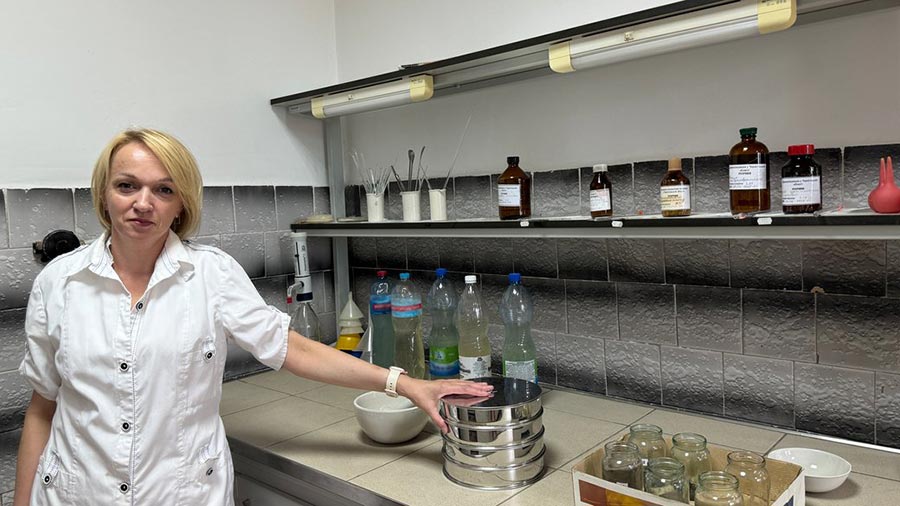
Should Ukraine expect ecological reparations?
The Register of Damages for Ukraine was established in The Hague and became operational on April 2, 2024. In March 2024, the Register opened its office in Kyiv and started accepting claims for damage or destruction of residential property and several other categories. “It is expected that in the future, it will be possible to submit applications under other types of damage, including damage to the environment and natural resources, demining and removal of unexploded ammunition,” the Register’s official website says.
“As the armed conflict in Ukraine is of international concern, the assessment of the damage caused to the environment and the proof of guilt of those responsible will be established by international judicial institutions based on the gathered evidence. According to the results of the assessment and confirmation of such damage, a decision will be made on possible compensation and restoration of the affected territories and the environment,” the Prosecutor General’s office stated.
According to the Ministry of Environmental Protection and Natural Resources of Ukraine, there is an international legal basis for reparations regarding the war in Ukraine and Russia’s international responsibility for conducting an aggressive war. How best to achieve this depends on the stakeholders and the degree of support for Ukraine and the victims of the war from the international community.
Ecocide or war crime?
Ecocide is the mass destruction of flora or fauna, contamination of the atmosphere or water resources, as well as other actions that may cause an environmental disaster, reads article 441 of the Criminal Code of Ukraine. Those responsible for ecocide face 8 to 15 years in prison. “This is one of the most difficult crimes to prove, as its definition is determined by notions not currently stipulated by law, such as ‘broad scale’, ‘contamination’, and ‘ecological disaster’,” said Vladyslav Ihnatenko, head of the Department for investigating war crimes against the environment at the General Prosecutor’s office. “At the same time, when documenting the consequences of hostilities, we use international treaties or international humanitarian law (the so-called law of armed conflict), which establishes the rules of warfare and specifies which actions constitute severe violations of these rules. In other words, war crimes against the environment,” he added. “The characteristics of such war crimes against the environment under international humanitarian law, in combination with Ukrainian legislation, provide legal grounds to prosecute for committing ’ecocide’ on the territory of Ukraine.”
But, for now, investigators do not consider the damage caused to the environment during the war to be ecocide.
However, “Ukrainian courts consider cases of war crimes, including those against the environment," said Ihnatenko. The Chernihiv Regional Prosecutor’s Office is investigating the Epicentre fire caused by Russian shelling under article 438 of the Criminal Code as a violation of the laws and customs of war. According to the Epicentre company, criminal proceedings regarding this case are currently under pre-trial investigation. Epicentre also indicates that they have not filed a lawsuit or an application to the Register of Damages. It is currently rebuilding destroyed stores across Ukraine. This includes the one on the outskirts of Chernihiv. Its reconstruction is scheduled to be completed by the end of November 2024.
This report is part of our coverage of war crimes justice produced in partnership with Ukrainian journalists. A first version of this article was published on the "Suspilne" website.


